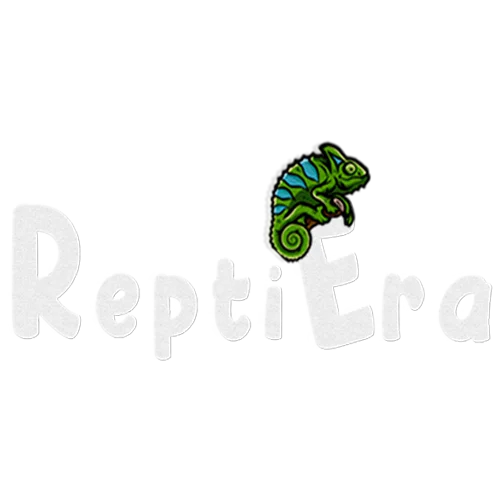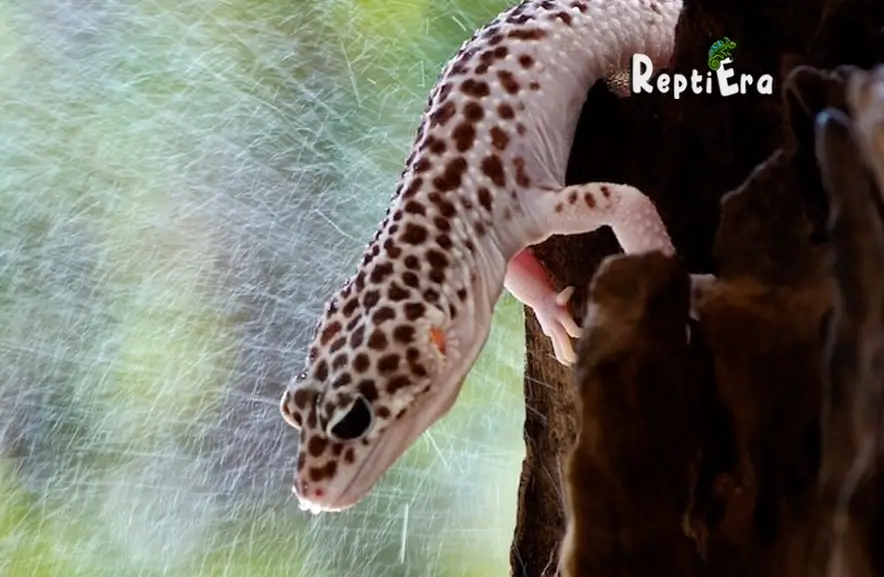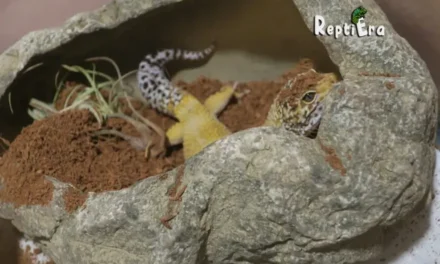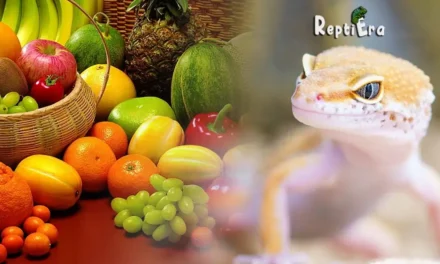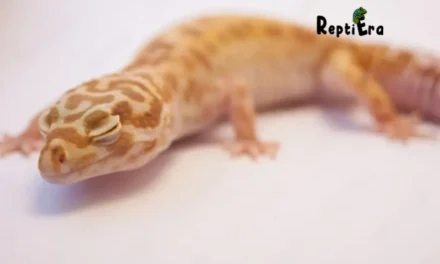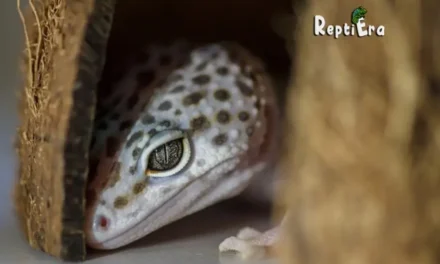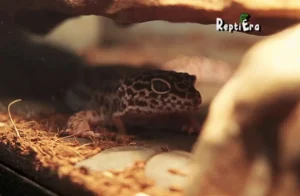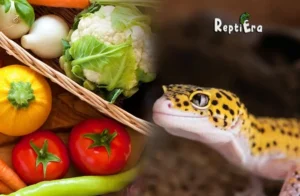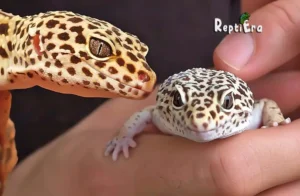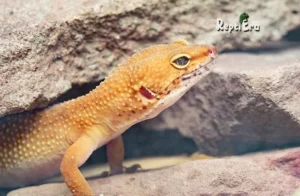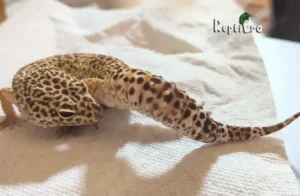As a long-time reptile vet, I’ve encountered numerous cases where a leopard gecko is not pooping, often leaving the owner puzzled and concerned. The good news is, that there are several reasons why this might be happening, and understanding them can provide peace of mind and comfort in caring for your pet’s health and longevity.
Why Is My Leopard Gecko Not Pooping?
Firstly, a healthy diet is crucial. Leopard geckos thrive on a variety of insects, but if they’re not eating enough or are given freeze-dried food, they may become dehydrated or constipated. Ensuring they have access to fresh water daily is essential. Another factor could be their habitat; it’s imperative to make sure you keep up with cleanings, be it daily, weekly, or monthly, to maintain a clean environment.
Finding no poop can be concerning, as it might indicate that your gecko is impacted. If your gecko doesn’t like its surroundings or is feeling unwell, this can also lead to issues. In such cases, it’s essential to take them to a reptile vet, as the condition can turn deadly. This article discusses the five most common reasons your leopard gecko might be having trouble producing feces, and what an owner can do about it. Remember, their needs must come out in the way you care for them, ensuring their well-being.
Table of Contents
First, Let’s Talk…
In my years of experience with leopard geckos, a common worry among owners is when their pet hasn’t used the bathroom for a few days. If your gecko is acting normal, it’s generally okay; these creatures don’t always need to go daily. However, if it’s been over 5 days, it’s time to start taking action.
Oddly enough, this is common in pets; for instance, dogs have their liked toilet spots, and a leopard gecko is no different. A significant factor can be their surroundings. If there’s been a change – perhaps you’ve recently moved or changed items in their habitat – they might be confused about where to “go”. Understanding these nuances can be crucial in ensuring your pet’s well-being.
I Modified the Habitat!
Having spoken to someone who recently decided to clean their leopard gecko’s tank, I understand how being busy can lead to the use of a new reptile spray or cleaning product in the habitat. When we use our hands, often cleaned with scented or strong soap, we don’t always recommend this for geckos.
Instead, opt for unscented, natural products, as there are hidden dangers in the fragrances for your Leo. This doesn’t mean over-cleaning the gecko tank; while keeping it clean is important, a smell too horrible or unfamiliar might disturb them. In this article, I explain why it may take a few days for your gecko to adjust and fight off smells to find a new spot to do its business. There’s a grace period of about one week during which your gecko should poop once it establishes a new spot.
After you’ve set down a paper towel – which I’ve always used for cleaning up faeces – it becomes easier over time to find where they go. The key is to give your gecko a sense of familiarity and comfort in its surroundings. This approach has helped many owners and their pets establish a clean, stress-free environment conducive to healthy habits.
Make Sure He’s Eating
When your leopard gecko is not eating, it could be a sign of why it’s not using the toilet. In ensuring their well-being, providing a varied diet is key. If they’re reluctant, try different foods and check if your Leo is in good health. It’s crucial to watch their personality for changes – if they show signs of lethargy, injury, or stress, these could be reasons they lose their appetites.
Acting quickly and keeping a close eye on their behaviour is essential. If there’s no improvement, schedule a vet visit. Also, consider the dynamics with other pets or if a young family member is excessively handling or interacting with the gecko, as these factors can contribute to its stress and eating habits.
Also Read: CAN LEOPARD GECKOS EAT VEGGIES
How Often Do These Reptiles Poop?
Most Leos use the bathroom once per day, but this can vary. For instance, baby leopard geckos might go 2 or 3 times a day, while adults may only poop a few times a week, with the frequency being more dependent on their age and diet.
The reptile’s frequency of feeding plays a role too. If your gecko eats every day, keep in mind that these little guys can go without pooping for up to five days. If you notice yours is not going to the toilet for a length of time, it could signal indigestion or constipation, potentially holding up their natural processes.
Why Is My Leopard Gecko Not Pooping?

Tip: Make sure your Leopard Gecko is not pooping; check if they’re eating their poop or cleaning up the evidence – geckos are known to do this from time to time.
A few of the most frequently encountered causes are:
1. Your Leopard Gecko Ate Substrate
Impaction is a common problem in leopard geckos and can be a tricky situation but often an easy fix. A loose substrate in the habitat can lead to your gecko becoming impacted, a definition according to Merriam-Webster, of being blocked by material wedged in a position that may affect the impacted colon. This is particularly a reason for concern in younger leos or young reptiles still learning about their world.
They often try to understand their habitat by licking or eating substrates like sand or wood chips, which can then block their system. It’s true that in the wild, many reptiles ingest dirt to balance minerals and follow their instincts, but in captivity, they should be provided with a habitat suited to their needs, using digestible materials.
Why your gecko continues to eat substrate despite being provided with a balanced diet might be a lack of certain minerals. To continue this natural behaviour safely, providing a calcium source at all times is crucial. Break a sepia bone into small pieces and offer it in a bowl so they can learn to get their proper nutrition and stop the need to eat substrate.
Further, dust your feeder insects with calcium powder to ensure your gecko is receiving all the nutrients it needs. This approach can help prevent impaction and maintain the health of your leopard gecko.
2. Your Leopard Gecko Ate Large Insects
It’s important to offer feeder insects that are not too big for your gecko, as impaction or constipation can occur from food items that are larger than necessary. It might seem like a great idea to give them a good challenge to hunt and eat bigger prey as a form of play, but it’s safer to play it safe. A good rule of thumb is to choose insects no wider than the width of your leopard gecko’s eyes.
I typically recommend small crickets but always check if they’re suitable for your adult gecko. Not only are they relatively cheap, but also can be gut-loaded to avoid any diet-related problems. Diet is mainly about balance; avoid feeding them items that are hard to digest, like insects with outer shells that they can’t easily break down. Hard-shelled insects are okay occasionally, but you might want to remove the hard shell to prevent any failure in digestion, which could result in health issues like paralysis.
Feeding Your Leopard Gecko a varied and balanced diet is key. Along with mealworms and other small insects, you can include vegetables and calcium supplements to ensure they can pass waste easily. A balanced diet not only prevents digestive issues but also contributes to the overall health and well-being of your leopard gecko.
3. Your Leopard Gecko is Living in Low Temps
If it’s too cold in your Leo’s tank, they may struggle to digest food, often resulting in a poor appetite and hardship in elimination. As a reptile, their digestion is heavily influenced by their environment. Keeping track of temps in the habitat is crucial, and I recommend using a digital thermometer or a temperature gun to ensure both cool and warm tank areas are appropriately regulated.
Most reptile thermometers are accurate within three degrees, so it’s vital to monitor temperatures in the important areas of the tank. Regularly measure the temperature in wherever your gecko spends the second most time to maintain a balanced environment.
The optimal temperature settings for a leopard gecko’s habitat should be maintained as follows:
- Surface temperature under lamps/warm hides: 88-92°F
- Air temperature approximately 5 inches above the ground: 73-76°F
- Air temperature on the cooler side, 5 inches above ground level: 73-76°F
- Nighttime temperatures: 67-74°F, with an ideal range being 70-74°F.
4. Your Leopard Gecko Has Deadly Parasites in His Guts
Parasites can be a serious issue in your Leo, leading them to refuse to eat over a period and, consequently, lack eating and defecate less frequently. These parasites can cause lethargy, weakness, and a reduced appetite. Watch for signs like rapid weight loss, runny stools, or other ailments that could indicate your leopard gecko is affected.
If you detect any of these symptoms, I recommend reading a fantastic book on reptile health as it can provide further insight. However, if you suspect your gecko might be affected, it’s crucial to consult a vet right away for appropriate care and treatment.
Related Post: ARE LEOPARD GECKOS GOOD PETS?
5. Your Leopard Gecko Isn’t Getting Enough Water
In the human world, we’re bombarded with the message that drinking water is crucial for health, and this applies to your leopard gecko too. For our reptile friends, hydration is critical for digestion and maintaining good health. If you think you’re doing a great job providing water, but your Leo is not pooping, it might be time to reevaluate your efforts.
A dehydrated gecko struggles with regular defecation as their digestive tract needs to be smooth and healthy to push out waste. The moisture in the bugs they eat is also vital, so ensure your feeder insects are well gut-loaded with veggies, fruits, or complete cricket food. If your gecko hasn’t pooped, check the size of its tail; if it’s small and shrivelled up, it needs to go.
Other signs of being dehydrated include sunken eyes, wrinkly skin, folded skin, a lack of urates (which should be a yellow colour and solid), and a lack of feces.
To test for dehydration, gently pinch their skin; if it doesn’t go back to normal quickly and remains folded, they need more fresh water. Place a bowl of water in their tank, and consider creating a humid environment by placing a warm, moist paper towel inside for about 30 seconds to help them poop. You can also place a wet paper towel or napkin in the tank for them to lick or bathe in. Remember, geckos do NOT enjoy being soaked, so gentle methods to increase their water intake are preferred.
6. Constipation
If your leopard gecko is constipated and isn’t pooping, often indicated by straining while trying to go, the best case is to give them time alone. Providing a humid hide can help them pass waste on their own while observing without potentially stressing them out. Consider feeding a mixed diet of crickets and mealworms, and offer water with a syringe every other day to soften the stool and make it easier to pass. Dehydration is a common cause of constipation; check if they’re drinking water to address this issue.
7. Your leopard gecko is shedding
When your leopard gecko is shedding, their skin could be blocking the faeces from reaching the vent and being passed. To solve this problem, make sure the gecko sheds completely. This can be aided by moistening them with warm water for several minutes, then removing any remaining shed with tweezers, and finally drying off with a towel. This process ensures no shed skin impedes their natural bodily functions.
8. It is Scared
If your leopard gecko is constantly trying to hide and feels threatened in its tank, this stress can prevent it from pooping because it’s scared. Make sure not to overhandle a nervous gecko too often; always be gentle. Keeping their tank clean, especially in the evening when they are most active, helps in not messing up their environment, which can be an indicator if they are scared. Unlike other pets, a leopard gecko won’t scream to show its fear, but its actions and habits can tell a lot about its comfort level.
9. Your leopard gecko is young
Sometimes, when a leopard gecko is young and still growing, it may not poop as its organs can’t handle the size of the waste, potentially getting lodged in the abdominal area. Keep an eye out if you notice your gecko’s abdomen protruding more than normal; this could be a sign of a blockage. In such cases, it’s crucial to take them to a reptile veterinarian as soon as possible for a check-up and appropriate treatment.
Also Read: WHY IS MY LEOPARD GECKO LICKING HIS BUM
10. Its tank is too small
There’s a possibility that if your Leopard Gecko’s tank is too small, they are not getting enough exercise to help them poop, resulting in it getting stuck. Make sure your gecko has at least a 15-gallon tank (a 10-15 gallon is recommended) with a hiding area to rest and a dry towel or reptile carpet, so it doesn’t have to lay directly on the substrate. A larger space and proper setup encourage natural behaviours and facilitate healthy digestion.
Bathing Your Leopard Gecko
When you find yourself needing to bathe your leopard gecko, choose a plastic container that’s larger than your gecko for comfort. Line the bottom with a paper towel or cloth, as it helps Leo to feel relaxed. Creating a mini reptile pool with a ramp allows them to get in and out on their own terms, reducing stress.
Fill the container with a tiny amount of water, about half an inch deep, just enough to cover their knees. Don’t fill it any higher to avoid your gecko getting stressed out. Keep the water temp lukewarm, around 86 degrees F, which is fine for these cold-blooded reptiles. If the water gets cold, it can be unpleasant for the animal.
Put your gecko in gently and carefully let them soak for 5 minutes, no longer than necessary to manage their comfort. Ten minutes should be enough. Use this opportunity to help remove any stuck shed.
Tools like a Q-tip or tweezers can be gentle yet effective in getting rid of excess skin. Proper skin removal is crucial for their health. Leaving the shed can cut off blood circulation, leading to the loss of toes. A bath during shedding is also a great way to keep them hydrated.
More on Tank Humidity
Earlier, we discussed how a humid tank can help your gecko stay hydrated. Putting a moist hide in the tank is a good way to maintain this, especially considering having three hideouts in total: a warm place to hide near the basking area, a cool place on the cool side, and a moist place for times when they need to go somewhere more humid. You can fill the moist hide with sphagnum moss and spray it with water. You’ll often notice the gecko will begin to shed and look pale or white when this happens, signalling the need for a more humid environment.
To create a suitable moist hide, you will require:
This hideaway (Cave)
Sphagnum moss (similar to this variety)
What Else Can I Do to Get My Gecko to Poop?
If you’ve got another gecko that is pooping normally, placing a piece of poop in your non-pooping gecko’s habitat can sometimes stimulate them. When handling this, wear disposable rubber gloves and use a paper towel to pick it up and put it in a different section of the tank. Another idea is to give your gecko a gentle rub. Most leopard geckos do not like being handled, so keep it short and sweet.
A rub on their belly with your finger can help get things moving. It’s important to understand that leos are more active during late night or early mornings rather than daytime, as they thrive in restricted hours. To make sure your gecko is set up to be happy and loving, darken their environment to minimize stress. It can be fun to see them active during the daytime, but if necessary, cover one side of the tank with a dark cloth or paper to keep them calm and healthy.
Also Read: HOW TO TRAVEL WITH A LEOPARD GECKO
FAQs
How Long Can a Leopard Gecko Go Without Pooping?
Leopard Geckos can go several days without pooping and still be healthy, especially if they are still eating but not defecating. However, if it’s more than three or four days, it’s wise to take them to a qualified reptile veterinarian to avoid digestive problems that can occur if feces become lodged in the abdomen.
What Symptoms of Constipation in Leopard Geckos?
In addition to not being able to poop, Leopard Geckos might show symptoms of being constipated, such as stopping eating, displaying a decreased appetite, starting to push at their vent area in an attempt to defecate, or becoming lethargic. These signs indicate a need for immediate attention to their health.
What Do I Do if My Leopard Gecko Isn’t Pooping?
If you suspect your leopard gecko is suffering from constipation, it’s crucial to take them to a reptile veterinarian. This can become a serious problem if left untreated, as waste can move up the intestines, blocking the passage of food. In addition, it can cause issues like bacteria or internal parasites that affect their health and could lead to death. The vet may give your Leo an enema with a saline solution to help expel any feces that remain inside their system.
How do I know if My Leopard Gecko is Impacted?
Impaction is usually easily diagnosed in a Leopard Gecko; they may stop passing gas, and one of the causes is when their stomach becomes hard. Also, if they are still eating but start trying to pass poop and nothing comes out of their system, with noticeable pushing at the vent where the feces are located, you might see a bulge in the stomach area, indicating impaction.
What Will Happen if I Do Not Treat My Leopard Gecko’s Impacted Stomach?
If you ignore an impacted bowel or intestine for too long in your leopard gecko, they are likely to die. This is because feces, gas, and toxins can build up in the stomach and intestines, eventually beginning to poison the rest of the body. Prompt veterinary care is essential in such cases.
How to Treat an Impacted Leopard Gecko
To treat an impacted leopard gecko, take it to a reptile veterinarian who will probably give the patient an enema and possibly a dose of oral medication. Recovery can take up to two weeks for your leopard gecko to completely recover, or even up to three months, provided it doesn’t become impacted again. Regular monitoring and care are crucial during this recovery period.
What Can I Feed My Leopard Gecko to Prevent Constipation and Impacted Stomachs?
To prevent constipation and impacted stomachs, feed your leopard gecko a healthy, low-fat diet consisting of crickets, mealworms, silkworms, and green veggies like collard greens, mustard greens, and other leafy greens. These foods contain fiber and water to help them poop effectively and maintain digestive health.
How do you know if your leopard gecko is constipated?
- Constipation issues.
- Swollen abdomen.
- Reduced energy levels.
- Decreased hunger.
- Reduction in weight.
- Dark blue marking on the side or abdomen.
How often do leopard geckos poop?
While one can’t speak for every leopard gecko’s experience, typically, a healthy gecko, especially those having reached two years and regularly shedding every month or month and a half, should poop once every one to three days. This frequency can vary based on their diet and individual health.
Why is my leopard gecko not digesting its food?
If the temperature in your gecko’s house is too cold, their intestines can’t digest food properly, which can lead to constipation. Maintaining a vital, appropriate temperature range is essential, as is ensuring they receive enough Calcium, which is needed for their digestive system to work effectively.
How can I help my leopard gecko poop?
To help your leopard gecko poop, Provide Water as Dehydration is a common and likely problem. Feed them water with a syringe if necessary. A gentle belly rub can sometimes Encourage Pooping. Additionally, placing a bit of poop from another gecko, wrapped in a paper towel, into a section of their vivarium can stimulate the instinct to eliminate.
Conclusion
In conclusion, understanding the reasons behind a leopard gecko’s inability to poop is crucial for their health and well-being. This article covered various factors, including dietary habits, environmental conditions like temperature and tank size, and health issues such as constipation, impaction, and the effects of shedding.
It’s important for leopard gecko owners to observe their pet’s behaviour, ensure a properly balanced diet, and maintain optimal living conditions. In cases of prolonged issues, seeking advice from a qualified reptile veterinarian is essential. Simple interventions, such as providing adequate water, ensuring the right diet, and even gentle belly rubs, can greatly impact their digestive health. Remember, a healthy leopard gecko is an active and happy pet, and your attentiveness can make all the difference in their quality of life.
